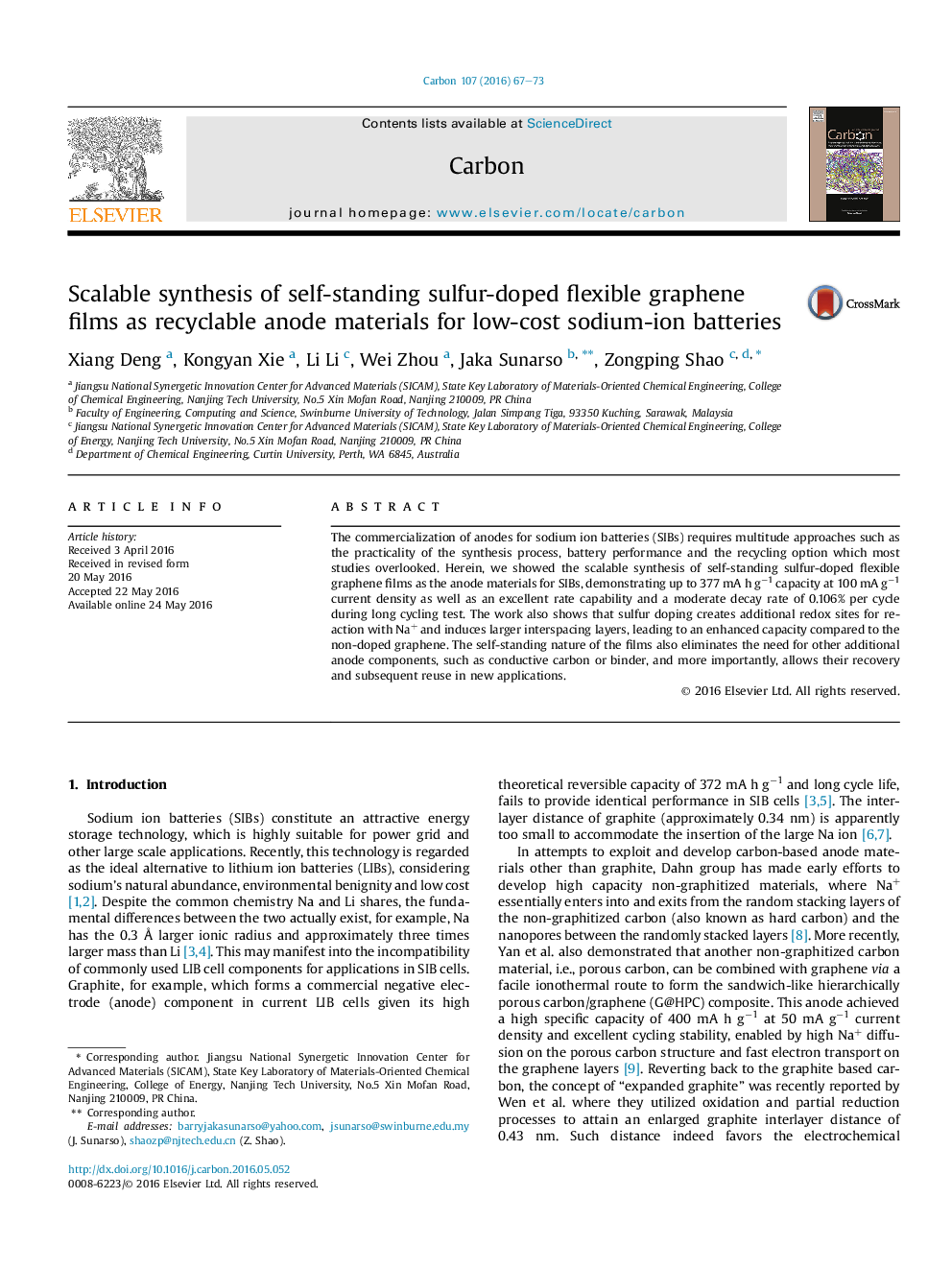| Article ID | Journal | Published Year | Pages | File Type |
|---|---|---|---|---|
| 1413080 | Carbon | 2016 | 7 Pages |
The commercialization of anodes for sodium ion batteries (SIBs) requires multitude approaches such as the practicality of the synthesis process, battery performance and the recycling option which most studies overlooked. Herein, we showed the scalable synthesis of self-standing sulfur-doped flexible graphene films as the anode materials for SIBs, demonstrating up to 377 mA h g−1 capacity at 100 mA g−1 current density as well as an excellent rate capability and a moderate decay rate of 0.106% per cycle during long cycling test. The work also shows that sulfur doping creates additional redox sites for reaction with Na+ and induces larger interspacing layers, leading to an enhanced capacity compared to the non-doped graphene. The self-standing nature of the films also eliminates the need for other additional anode components, such as conductive carbon or binder, and more importantly, allows their recovery and subsequent reuse in new applications.
